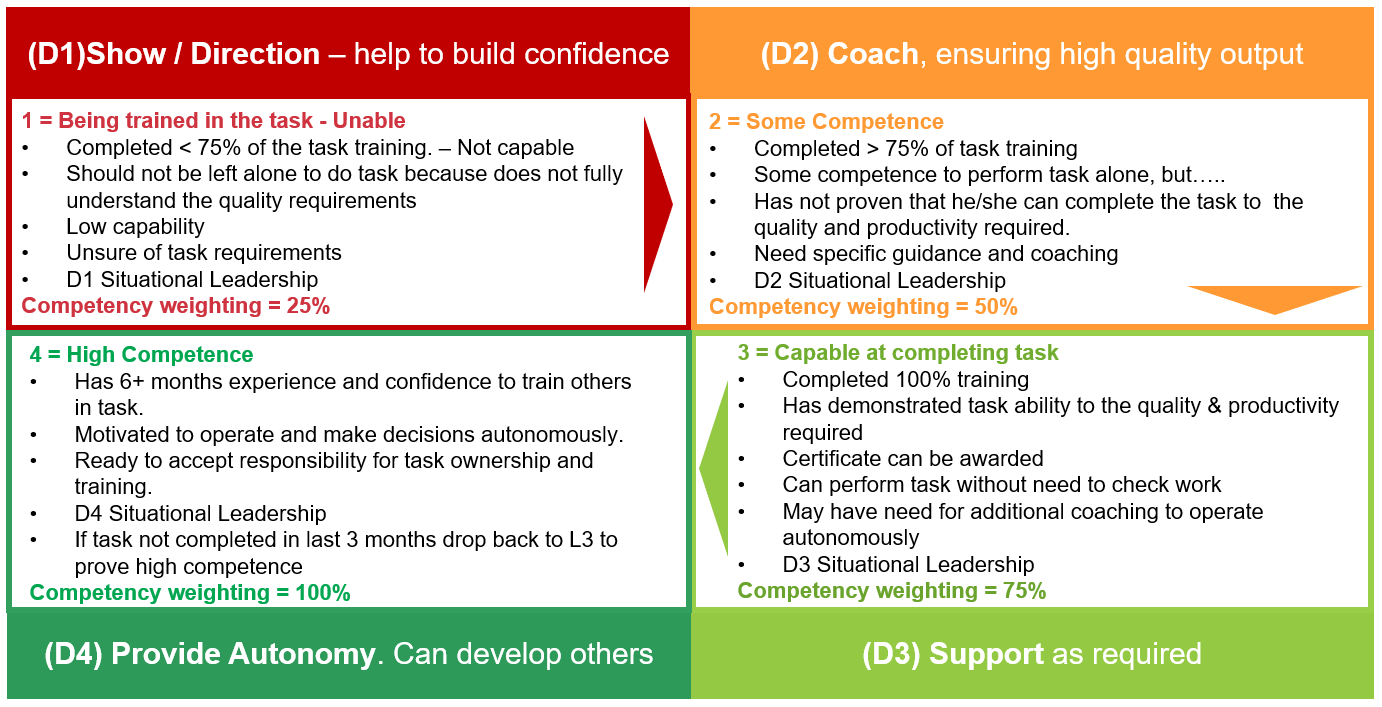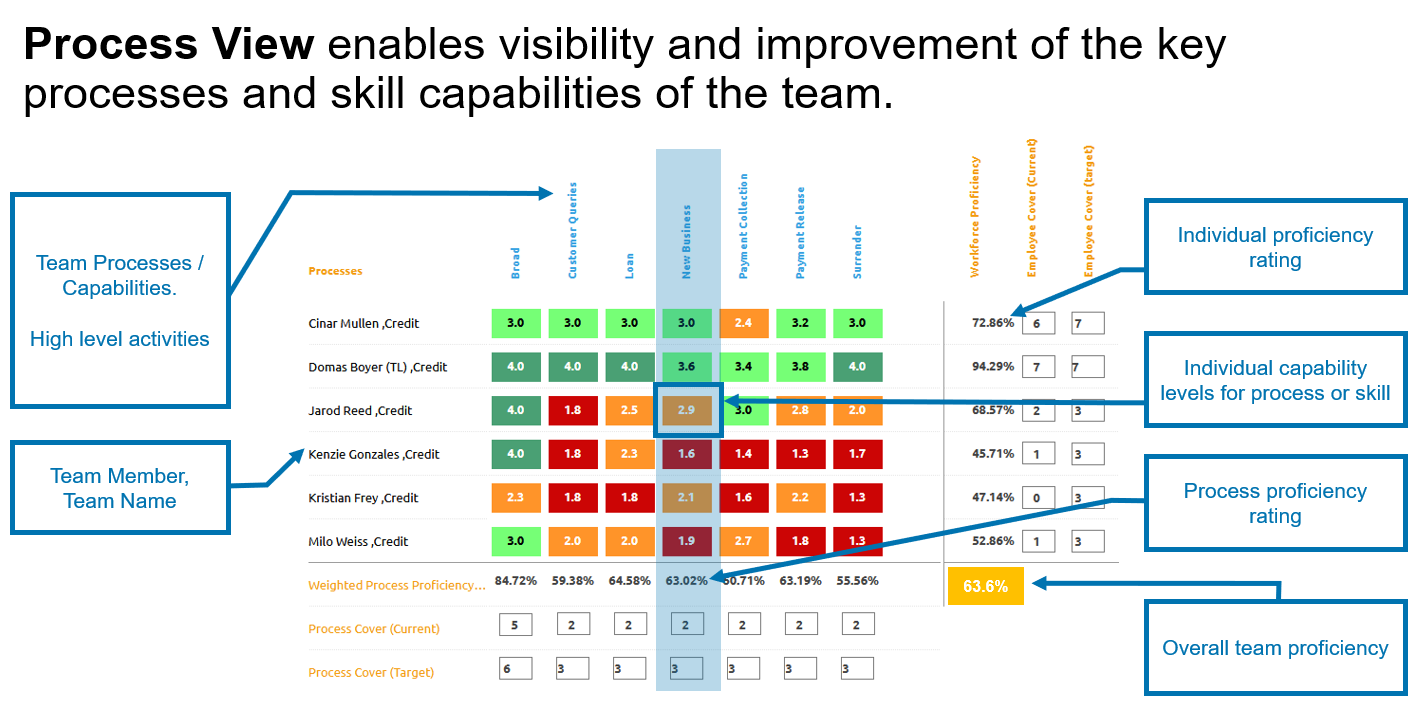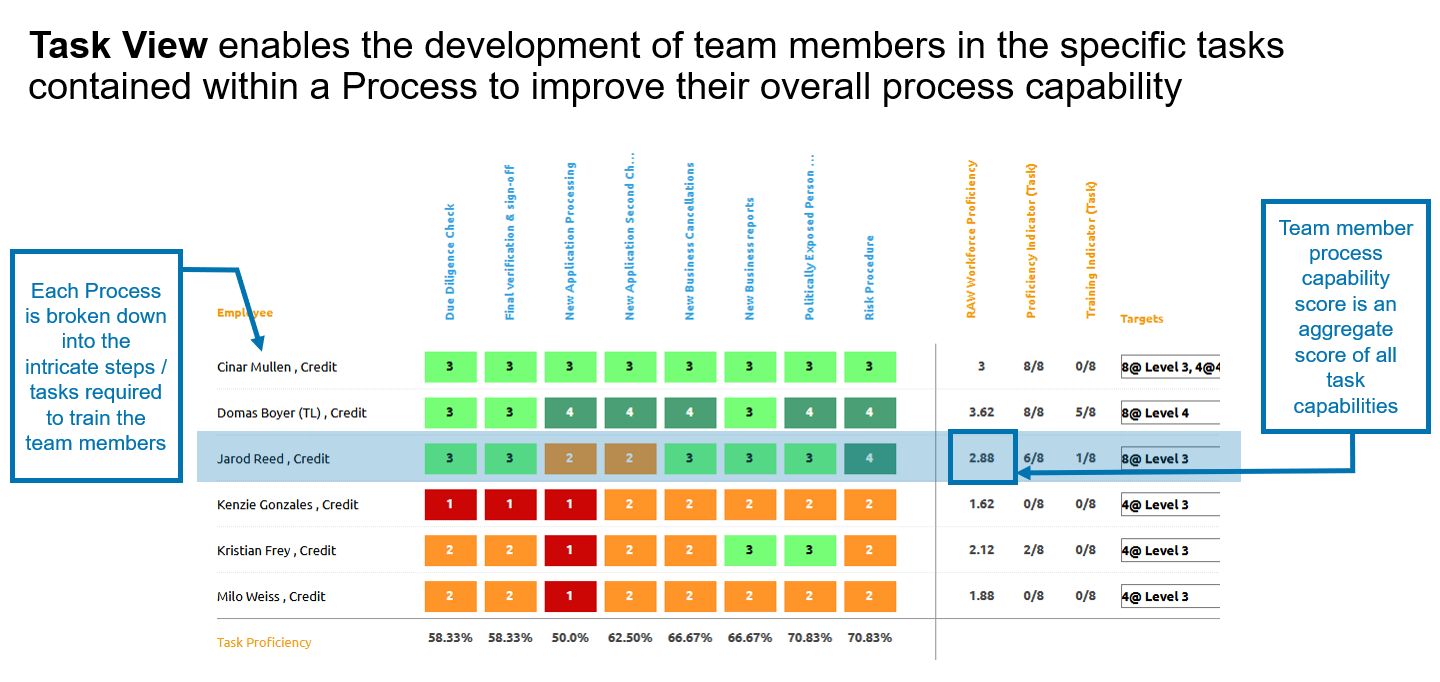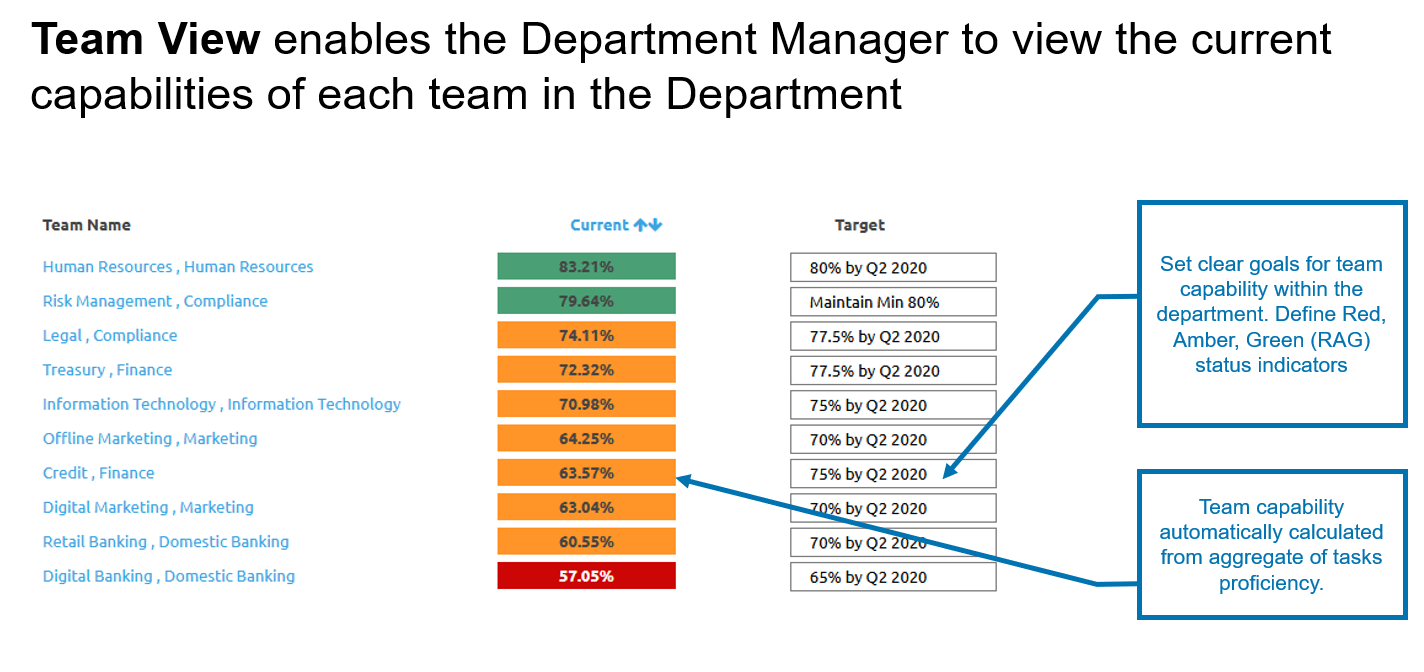It is essential that any management tool is simple and easy to use / interpret. More importantly, when it comes to a skills matrix, the tool must facilitate genuine, lasting improvements in team capability and performance.
From interactions with thousands of global companies the ability6® platform has been developed to enable team leaders to capture intricate (task) skill level and summary (process) skill level. This is achieved by capturing at least the top ten activities (processes) that occur at a team level, then proceeding to break these down into the intricate training steps (tasks). Ideally over-time all team processes and tasks should be entered into the ability6® platform / skills matrix.
Using a proven rating system, built upon the Toyota Production System (TPS) Skills Matrix, the ability6® method (inclusive of a visual RAG and number scheme), enables team leaders, coaches and people managers to visually record and identify critical training needs.
Furthermore, tasks and processes can be tagged with volume and complexity indicators, thus enabling a sort feature so that high volume & high complexity tasks with skills deficiencies can be highlighted as a priority, over say, low volume & low complexity – thus adding an additional, and substantive level of insight.
First, let’s understand the basis for rating an individual’s proficiency. The evolution of skill is broken down into four quadrants. Being specific with each quadrant helps to mitigate proficiency level subjectiveness.
Removing subjectiveness is key, as within the ability6® application there is an option for an individual to self-assess their own skill in addition to this being administered by the team leader. Having team members self-assess their own skill, upon review by the team leaders can enable genuine alignment to the quadrants as well as forcing conversations that ought to be addressed (I think I’m a level four, but you think I’m a level two – why?).

Then within the platform list out all processes and subsequent tasks that make up each process. Rate an individual at each task proficiency level to instantly (and automatically view capability at the holistic process level). Having these two levels helps to maintain a single-page view of team proficiency, reducing the time to identify skills deficiencies and weighing up training based on actual needs of the team / company.
At the process level, you will end up with a matrix that looks like this. The system will automatically count proficiency / capability at individual and process level, where proficiency is level 3 or above. Then the team leader can set specific upskill targets which can be shared with the individual and team.

You can break down each process into the intricate tasks, again setting specific targets to achieve the overall process level target.

Moving up the matrix, from a senior leadership perspective the ability6® application automatically outlines overall proficiency at both team and department (multiple teams assigned to a single department) level. This can help to engage senior management and will encourage target settings from a top-down perspective.
It is vital that all teams adhere to the skills proficiency definitions, therefore holistic team level insights are comparing apples, with apples.

Two additional proficiency levels are identified in ability6®, which are Zero = No requirement to be proficient, and Five = Strategic Control, able to amend ‘how’ the task/process is done. Whilst not used as frequently as the 1-4, are important measures to be considered as the use of a skills matrix matures.


